The Journey Prize Stories 21 Read online
WINNERS OF THE $10,000 JOURNEY PRIZE
1989
Holley Rubinsky for
“Rapid Transits”
1990
Cynthia Flood for “My Father
Took a Cake to France”
1991
Yann Martel for “The Facts
Behind the Helsinki Roccamatios”
1992
Rozena Maart for “No Rosa,
No District Six”
1993
Gayla Reid for “Sister Doyle’s Men”
1994
Melissa Hardy for “Long Man the River”
1995
Kathryn Woodward for “Of
Marranos and Gilded Angels”
1996
Elyse Gasco for “Can You Wave
Bye Bye, Baby?”
1997 (shared)
Gabriella Goliger for
“Maladies of the Inner Ear”
Anne Simpson for
“Dreaming Snow”
1998
John Brooke for “The Finer Points of Apples”
1999
Alissa York for “The Back of the
Bear’s Mouth”
2000
Timothy Taylor for
“Doves of Townsend”
2001
Kevin Armstrong for
“The Cane Field”
2002
Jocelyn Brown for
“Miss Canada”
2003
Jessica Grant for
“My Husband’s Jump”
2004
Devin Krukoff for
“The Last Spark”
2005
Matt Shaw for “Matchbook for a
Mother’s Hair”
2006
Heather Birrell for
“BriannaSusannaAlana”
2007
Craig Boyko for
“OZY”
2008
Saleema Nawaz for
“My Three Girls”
ABOUT THE JOURNEY PRIZE STORIES
The $10,000 Journey Prize is awarded annually to an emerging writer of distinction. This award, now in its twenty-first year, and given for the ninth time in association with the Writers’ Trust of Canada as the Writers’ Trust of Canada/ McClelland & Stewart Journey Prize, is made possible by James A. Michener’s generous donation of his Canadian royalty earnings from his novel Journey, published by McClelland & Stewart in 1988. The Journey Prize itself is the most significant monetary award given in Canada to a developing writer for a short story or excerpt from a fiction work in progress. The winner of this year’s Journey Prize will be selected from among the twelve stories in this book.
The Journey Prize Stories has established itself as the most prestigious annual fiction anthology in the country, introducing readers to the finest emerging writers from coast to coast for more than two decades. It has become a who’s who of up-and-coming writers, and many of the authors who have appeared in the anthology’s pages have gone on to distinguish themselves with collections of short stories, novels, and literary awards. The anthology comprises a selection from submissions made by the editors of literary journals from across the country, who have chosen what, in their view, is the most exciting writing in English that they have published in the previous year. In recognition of the vital role journals play in fostering literary voices, McClelland & Stewart makes its own award of $2,000 to the journal that originally published and submitted the winning entry.
This year the selection jury comprises three acclaimed writers:
Camilla Gibb is the award-winning author of three novels, Mouthing the Words, The Petty Details of So-and-so’s Life, and Sweetness in the Belly, as well as numerous short stories, articles, and reviews. Her work has been shortlisted for The Giller Prize and won the Trillium Book Award, the City of Toronto Book Award, and the CBC Canadian Literary Award for short fiction. She was named by the jury of the prestigious Orange Prize as “one of 21 writers to watch in the new century.” Camilla’s new novel, The Beauty of Humanity Movement, is forthcoming from Doubleday in 2010. She lives in Toronto.
Lee Henderson is the author of the award-winning short story collection The Broken Record Technique and the novel The Man Game, a finalist for the Rogers Writers’ Trust Fiction Prize and winner of the Ethel Wilson Fiction Prize. A two-time nominee for the Journey Prize, he is a contributing editor to the arts magazines Border Crossings in Canada and Contemporary in the U.K. He lives in Vancouver.
Rebecca Rosenblum’s short fiction has been shortlisted for the Journey Prize, the National Magazine Award, and the Danuta Gleed Award. Her first collection of short fiction, Once, won the Metcalf-Rooke Award and was named one of Quill & Quire’s “15 Books that Mattered in 2008.” Her stories have been seen recently in The Fiddlehead, Earlit Shorts, and Best Canadian Short Stories, among other places. Rebecca lives, works, and writes in Toronto.
The jury read a total of seventy-two submissions without knowing the names of the authors or those of the journals in which the stories originally appeared. McClelland & Stewart would like to thank the jury for their efforts in selecting this year’s anthology and, ultimately, the winner of this year’s Journey Prize.
McClelland & Stewart would also like to acknowledge the continuing enthusiastic support of writers, literary journal editors, and the public in the common celebration of new voices in Canadian fiction.
For more information about The Journey Prize Stories, please consult our website: www.mcclelland.com/jps.
CONTENTS
Introduction
Camilla Gibb, Lee Henderson, and Rebecca Rosenblum
ADRIAN MICHAEL KELLY
Lure
(from Prairie Fire)
LYNNE KUTSUKAKE
Away
(from Grain Magazine)
JESUS HARDWELL
Easy Living
(from Exile: The Literary Quarterly)
PAUL HEADRICK
Highlife
(from Event)
DAVE MARGOSHES
The Wisdom of Solomon
(from The Dalhousie Review)
ALEXANDER MACLEOD
Miracle Mile
(from The New Quarterly)
YASUKO THANH
Floating Like the Dead
(from Vancouver Review)
SARAH L. TAGGART
Deaf
(from The Malahat Review)
SARAH KEEVIL
Pyro
(from Event)
SHAWN SYMS
On the Line
(from PRISM international)
FRAN KIMMEL
Picturing God’s Ocean
(from Grain Magazine)
DANIEL GRIFFIN
The Last Great Works of Alvin Cale
(from The Dalhousie Review)
About the Authors
About the Contributing Journals
Previous Contributing Authors
INTRODUCTION
Writers select their most polished short stories to submit to journals. From what they receive, the journals’ editors choose what they feel are the most surprising and gripping stories to publish, then winnow those published stories again to find those they consider most worthy of inclusion in a national anthology. That’s when the packages show up in the Journey Prize jury’s mailboxes – this year, filled with seventy-two nuanced, deeply imagined, and sharply written pieces of short fiction.
What a pleasure to read so many stellar explorations of a challenging literary form. What an education, too. And what a terrifying challenge to look at what the best literary editors in Canada consider the best stories, and to try to choose the best of those. The pleasure and education far outweighed the terror, but sti
ll it was daunting. Brilliant short stories can be brilliant along any number of metrics – realism or strangeness, elegance or blunt simplicity, tight plotting or sprawling authenticity. Comparison is fraught and dubious at best. All we can do, whether in the role of judge, teacher, or simply happy reader, is to consider what the writer was trying to achieve, how well he or she succeeded in that goal, and how excited the reader is about that success.
One terribly exciting success, in our opinion, is “The Last Great Works of Alvin Cale” by Daniel Griffin. This subtle and complicated story of art, love, and lust moves forward on the grim trajectory of death, but also draws haunting life from its central character, Skylar, and his admission to himself of all he truly feels, and longs for. His son’s illness renews their relationship and their uneasy intimacy, full of envy, rivalry, and fierce affection for beauty. Griffin has taken on considerable challenges in portraying the working lives of artists, and has done so with amazing, and heartbreaking, force.
Adrian Michael Kelly’s “Lure” is also a story about a father and a son, but Kelly’s is an altogether different art, full of the simple intensity of a child’s observation. Kelly doesn’t trouble the reader with anything but the moment as the boy sees it. The drama inheres in a child’s anxiety over pleasing his father, over the life of a frog, and the taste of a sandwich. Although “Lure” does have a climax of adult pain, it is the boy’s perceptions and tensions that dominate, and it is to Kelly’s infinite credit that this seems not a limitation but an illumination.
To continue with family stories, Sarah L. Taggart’s “Deaf” is told from alternating perspectives of a mother and her young daughter, both missing a sense of so many things in their lives. The glittering percision of Taggart’s language allows for both the humour of children bickering over ketchup and the quotidian tragedy of adults ground down by both hope and disappointment. Taggart never diminishes her characters’ lives of canned tomatoes and Hungry Hungry Hippos, nor does she lionize them or excuse their bad behaviour. She just achieves that incredible literary summit of bringing them to life.
The gift in all of these stories lies in the adage of showing rather than telling. Particularly rich in this regard are those stories that immerse us in specific histories or geographies, making setting integral to and inseparable from the events and emotions of the characters.
Yasuko Thanh’s “Floating Like the Dead” takes us into a little-known and painful chapter in Canadian history. Here, the few remaining inhabitants of a turn-of-the-century colony of Chinese lepers off the coast of B.C. spend the last of their days clinging to something as futile as hope. The limits of language, racism, and poverty have already defined their immigrant lives. Their alienation becomes complete as their bodies rebel and repel, and they are exiled to die in isolation. They must use their declining strength to battle a rugged geography they cannot beat. The forest is primeval and eternal and the western breezes across the Pacific can only remind them of the China of their youths. Thanh strikes that difficult balance between depicting bigger worlds and worlds within, and uses the resonances between the internal and external to subtle and graceful effect. This is a story of brittle beauty, which gives as much room to the unspoken as the spoken.
In “Highlife,” Paul Headrick similarly addresses imminent death, the silences that precede it, and the sounds that surround it. A husband and wife, together for twenty-six years, become unglued from each other in the face of the husband’s illness and the anger that consequently possesses him. He is a lover of music – an academic, a radio host, and a critic – making a pilgrimage of sorts to Ghana with his wife. He is looking to hear highlife music in its original context – buoyant life-affirming sounds – but he and his wife are largely silent companions on this trip; there is little he is compelled to voice aloud. Against the heat and confusion, the dancing bodies and the music, his life – and her life in relation to him – are coming to a painful end. In this case it is the contrast between internal and external worlds, the disconnect between them, that gives the story its poignancy, isolating the characters from each other and the world around them.
What isolates the main character in Lynne Kutsukake’s “Away” is the arrival of sudden news that casts her out of her day-to-day life. As in “Floating Like the Dead,” “Away” brings a little-known piece of history to light – in this case, the abduction of several young Japanese by North Koreans in the late-1970s to serve as Japanese language teachers for the North Korean Intelligence Service. When this is discovered decades later, the main character is stunned to see a picture of a girl she once knew among the abductees. They had been classmates, volleyball teammates, and had once shared an intimate, if confusing, moment. But then Sayuri had disappeared. Photos of her were plastered throughout the town, rumours about her abounded, and the police investigation brought no answers. In the aftermath of Sayuri’s disappearance, the main character had felt drawn to the sea in a way she could not explain. She would stare at the waves and the horizon and think of floating and fish, which connected her to the missing Sayuri in some disconcerting way. Thirty years pass before Sayuri’s whereabouts are revealed. But there remain silences and vast unknowns and no real answers. There is only the seashore where the narrator used to stand, perhaps intuiting somehow that Sayuri lived on the other side.
The stories in this anthology are written by authors from across Canada, about people from all around the world, and told from the point of view of people living vastly different lives. Some are set in a Canada few of us are familiar with, notably Jesus Hardwell’s “Easy Living” and Shawn Syms’s “On the Line,” which takes us on a rare and intimate tour of meatpacking and slaughterhouse culture. Reading is an act of empathy. A reader wants to believe and to feel and to share in the memories and condition of another person, however unfamiliar or unreliable the person is, and the writer’s responsibility is simply to make this possible.
Memory, with its narrativizing techniques of emphasis and elision, is a fiction writer’s third hand. It scrambles just as hard as the left and right to make sense of disconnected things. And a great deal of fiction is taken up with an exploration of this unseen hand’s dexterity. Memory is a common theme. While a writer’s ten fingers type, the third hand caresses the keys of synapses and shifts faraway-driven thoughts to the front of the mind. Memory, drawing from life, grasps what the technology of language tries to articulate – experience. Memory prompts the other hands to work, and sometimes makes its imperfect self the subject of the story, as it does in Fran Kimmel’s “Picturing God’s Ocean” and in Dave Margoshes’s “The Wisdom of Solomon,” in which the narrator’s humble, ever-worried father finds himself writing an advice column for a Jewish newspaper in Cleveland after the First World War. For its voice, “The Wisdom of Solomon” is an astonishing work of memory guided by the very different voices of two generations. Stirred by thoughts of the narrator’s father, the story at once inhabits the melancholy and reflective voice of the son and the eager, worried voice of the father, so that he, the Jewish Diaspora, and the glory days of newsprint are rendered with such unerring clarity that the narrator and his father will both endure in the reader’s own memory in great detail.
A great story, by this metaphor’s definition, has got superb third-hand coordination, but a story is also more commonly said to have legs. When the premise and the language, and especially the characters, are all so exciting to read that you re-read, and tell your friends to read, then a story has legs. It will endure. Included in this selection are two very different stories that have remarkable legs and that also happen to be about characters on the run, physically and psychologically. Alexander MacLeod’s “Miracle Mile” is about a runner on his last race in a tragicomic tale of jockdom gone awry. “Miracle Mile” shows us that in life there can be fitness without health, and commitment without honour. Sarah Keevil’s story “Pyro” is about a dishonourable young woman running from one bad relationship to another – out of the frying pan and into the fire, as
it were – as she finds herself involved with a fire-starter. “Pyro” depicts a narrator fleeing from responsibility who would rather burn away memories and start fresh than face herself and her mistakes.
How many great short stories were published in Canada this past year? Twelve? No way, far more than a bundle of twelve. Journals are still the best first place to fish for examples from our burgeoning literary talent pool. These twelve pieces are highlights from the many discoveries made by Canadian literary journals during the previous year. Readers of Grain and PRISM, Vancouver Review and The Dalhousie Review, Exile and other literary magazines already know that the country’s literary efforts are well beyond the meniscus; this is only a sample. The three of us spent all day talking about our choices, and once the selection was made, it felt like the conversation ended too soon. Short stories have a contemporary urgency to them that makes you want to talk about their implications. That’s why once you fall in love with the form, with all that a short story offers in a too-brief amount of space, the possibilities for characters and premises, from then on all you can do is read them as they come, and tell others, “Here, check out this.”
Camilla Gibb
Lee Henderson
Rebecca Rosenblum
June 2009
ADRIAN MICHAEL KELLY
LURE
On their way down to Ecky’s for an oil change and filters his father pulls into Canadian Tire. Stares at the lures as long as his hand. Shimmering eyes and thick as sausage – the long wicked dangle of treble-barbed hooks – they look like specimens bungled by God. Or something older than God. And crueller.
As his father slides a box – it says HEDDON’S COBRA – from one of the long jutting prongs, the boy slips round the end of the shelf. Walks past the spinners and the hairy buzzbaits to the display of shiny spoons. Sees the Red Devil. Notes the price. Moves down the aisle. Stands on tiptoes – his father is reading the back of the box – then scans the display of rods and sees the one his father got him. Checks the tag. Then the selection of open-faced reels. Finds one like his then does the sum. Knows they are not poor. But knows they don’t have heaps. And feels the weight of forty dollars.

 Astounding Stories, March, 1931
Astounding Stories, March, 1931 Astounding Stories, February, 1931
Astounding Stories, February, 1931 Futuria Fantasia, Spring 1940
Futuria Fantasia, Spring 1940 The King's Daughter and Other Stories for Girls
The King's Daughter and Other Stories for Girls Uncanny Tales
Uncanny Tales Masters of Noir: Volume Two
Masters of Noir: Volume Two Witty Pieces by Witty People
Witty Pieces by Witty People Sylvaneth
Sylvaneth Space Wolves
Space Wolves Hammerhal & Other Stories
Hammerhal & Other Stories The Fantasy Fan, March, 1934
The Fantasy Fan, March, 1934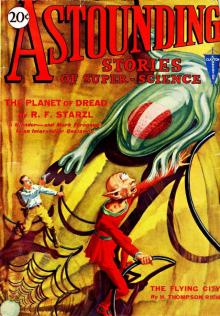 Astounding Stories of Super-Science, August 1930
Astounding Stories of Super-Science, August 1930 Astounding Stories, August, 1931
Astounding Stories, August, 1931 The Burden of Loyalty
The Burden of Loyalty Return to Wonderland
Return to Wonderland Anthology - A Thousand Doors
Anthology - A Thousand Doors The Fantasy Fan, October 1933
The Fantasy Fan, October 1933 Astounding Stories, June, 1931
Astounding Stories, June, 1931 Southern Stories
Southern Stories Astounding Stories of Super-Science, May, 1930
Astounding Stories of Super-Science, May, 1930 The Fantasy Fan December 1933
The Fantasy Fan December 1933 Adventures in Many Lands
Adventures in Many Lands The Fantasy Fan February 1934
The Fantasy Fan February 1934 The Fantasy Fan November 1933
The Fantasy Fan November 1933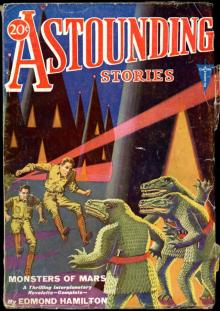 Astounding Stories, April, 1931
Astounding Stories, April, 1931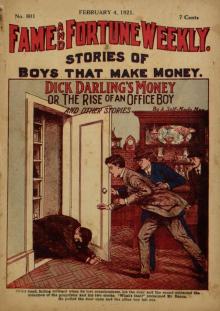 Fame and Fortune Weekly, No. 801, February 4, 1921
Fame and Fortune Weekly, No. 801, February 4, 1921 Astounding Stories of Super-Science, November, 1930
Astounding Stories of Super-Science, November, 1930 Astounding Stories of Super-Science January 1931
Astounding Stories of Super-Science January 1931 A Monk of Fife
A Monk of Fife Astounding Stories of Super-Science September 1930
Astounding Stories of Super-Science September 1930 Astounding Stories of Super-Science July 1930
Astounding Stories of Super-Science July 1930 Astounding Stories of Super-Science, June, 1930
Astounding Stories of Super-Science, June, 1930 Astounding Stories of Super-Science, October, 1930
Astounding Stories of Super-Science, October, 1930 Astounding Stories of Super-Science, March 1930
Astounding Stories of Super-Science, March 1930 The Fantasy Fan January 1934
The Fantasy Fan January 1934 The Fantasy Fan September 1933
The Fantasy Fan September 1933 Astounding Stories of Super-Science February 1930
Astounding Stories of Super-Science February 1930 Astounding Stories, May, 1931
Astounding Stories, May, 1931 Strange Stories of Colonial Days
Strange Stories of Colonial Days Golden Age of Science Fiction Vol IX
Golden Age of Science Fiction Vol IX Astounding Stories of Super-Science, December 1930
Astounding Stories of Super-Science, December 1930 Evolutions: Essential Tales of the Halo Universe
Evolutions: Essential Tales of the Halo Universe Good Stories Reprinted from the Ladies' Home Journal of Philadelphia
Good Stories Reprinted from the Ladies' Home Journal of Philadelphia Dragons!
Dragons!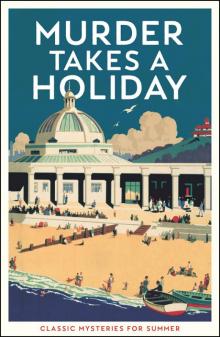 Murder Takes a Holiday
Murder Takes a Holiday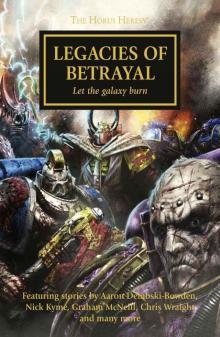 Legacies of Betrayal
Legacies of Betrayal STAR WARS: TALES FROM THE CLONE WARS
STAR WARS: TALES FROM THE CLONE WARS Strange New Worlds 2016
Strange New Worlds 2016 Lippincott's Magazine, August, 1885
Lippincott's Magazine, August, 1885 Golden Age of Science Fiction Vol X
Golden Age of Science Fiction Vol X Hot Stuff
Hot Stuff Santa Wore Spurs
Santa Wore Spurs Paranormal Erotica
Paranormal Erotica Tangled Hearts: A Menage Collection
Tangled Hearts: A Menage Collection Sweet Tea and Jesus Shoes
Sweet Tea and Jesus Shoes The Journey Prize Stories 25
The Journey Prize Stories 25 Wild Western Tales 2: 101 Classic Western Stories Vol. 2 (Civitas Library Classics)
Wild Western Tales 2: 101 Classic Western Stories Vol. 2 (Civitas Library Classics) (5/15) The Golden Age of Science Fiction Volume V: An Anthology of 50 Short Stories
(5/15) The Golden Age of Science Fiction Volume V: An Anthology of 50 Short Stories (4/15) The Golden Age of Science Fiction Volume IV: An Anthology of 50 Short Stories
(4/15) The Golden Age of Science Fiction Volume IV: An Anthology of 50 Short Stories Ten Journeys
Ten Journeys The Boss
The Boss The Penguin Book of French Poetry
The Penguin Book of French Poetry Golden Age of Science Fiction Vol VIII
Golden Age of Science Fiction Vol VIII His Cinderella Housekeeper 3-in-1
His Cinderella Housekeeper 3-in-1 The Magazine of Fantasy & Science Fiction - July/August 2016
The Magazine of Fantasy & Science Fiction - July/August 2016 PYRATE CTHULHU - Tales of the Cthulhu Mythos (vol.2)
PYRATE CTHULHU - Tales of the Cthulhu Mythos (vol.2) Tales from a Master's Notebook
Tales from a Master's Notebook April 1930
April 1930 New Erotica 6
New Erotica 6 Damocles
Damocles The Longest Night Vol. 1
The Longest Night Vol. 1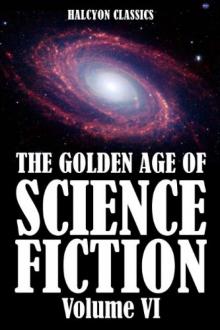 The Golden Age of Science Fiction Volume VI: An Anthology of 50 Short Stories
The Golden Age of Science Fiction Volume VI: An Anthology of 50 Short Stories (1/15) The Golden Age of Science Fiction: An Anthology of 50 Short Stories
(1/15) The Golden Age of Science Fiction: An Anthology of 50 Short Stories Eye of Terra
Eye of Terra ONCE UPON A REGENCY CHRISTMAS
ONCE UPON A REGENCY CHRISTMAS Nexus Confessions
Nexus Confessions Passionate Kisses
Passionate Kisses War Without End
War Without End Doctor Who: Time Lord Fairy Tales
Doctor Who: Time Lord Fairy Tales Gotrek and Felix: The Anthology
Gotrek and Felix: The Anthology WESTERN CHRISTMAS PROPOSALS
WESTERN CHRISTMAS PROPOSALS The Journey Prize Stories 27
The Journey Prize Stories 27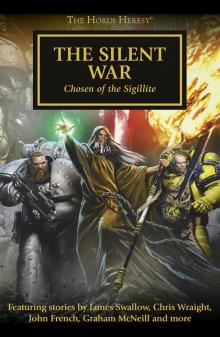 The Silent War
The Silent War Liaisons
Liaisons Ellora's Cavemen: Tales from the Temple IV
Ellora's Cavemen: Tales from the Temple IV Ellora's Cavemen: Tales from the Temple II
Ellora's Cavemen: Tales from the Temple II Some of the Best From Tor.com, 2013 Edition: A Tor.Com Original
Some of the Best From Tor.com, 2013 Edition: A Tor.Com Original Urban Occult
Urban Occult Fractures
Fractures The Stories: Five Years of Original Fiction on Tor.com
The Stories: Five Years of Original Fiction on Tor.com The Penguin Book of Modern British Short Stories
The Penguin Book of Modern British Short Stories Mortarch of Night
Mortarch of Night The Portable Nineteenth-Century African American Women Writers
The Portable Nineteenth-Century African American Women Writers The Golden Age of Science Fiction Volume VII: An Anthology of 50 Short Stories
The Golden Age of Science Fiction Volume VII: An Anthology of 50 Short Stories Holy Bible: King James Version, The
Holy Bible: King James Version, The Eight Rooms
Eight Rooms sanguineangels
sanguineangels DarkNightsWithaBillionaireBundle
DarkNightsWithaBillionaireBundle Casserole Diplomacy and Other Stories
Casserole Diplomacy and Other Stories How I Survived My Summer Vacation
How I Survived My Summer Vacation Alfred Hitchcock Presents: 16 Skeletons From My Closet
Alfred Hitchcock Presents: 16 Skeletons From My Closet Lords, Ladies, Butlers and Maids
Lords, Ladies, Butlers and Maids The B4 Leg
The B4 Leg Ellora's Cavemen: Tales from the Temple I
Ellora's Cavemen: Tales from the Temple I 2014 Campbellian Anthology
2014 Campbellian Anthology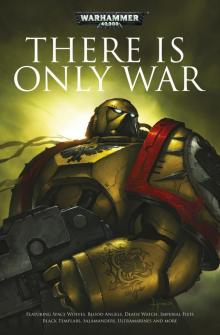 There Is Only War
There Is Only War Obsidian Alliances
Obsidian Alliances 12 Gifts for Christmas
12 Gifts for Christmas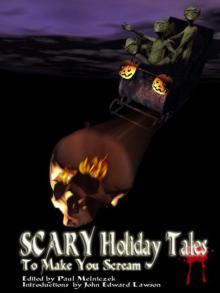 Scary Holiday Tales to Make You Scream
Scary Holiday Tales to Make You Scream 25 For 25
25 For 25 The Plagues of Orath
The Plagues of Orath And Then He Kissed Me
And Then He Kissed Me Star Trek - Gateways 7 - WHAT LAY BEYOND
Star Trek - Gateways 7 - WHAT LAY BEYOND Laugh Your Head Off Again and Again
Laugh Your Head Off Again and Again The Balfour Legacy
The Balfour Legacy Golden Age of Science Fiction Vol XI
Golden Age of Science Fiction Vol XI (3/15) The Golden Age of Science Fiction Volume III: An Anthology of 50 Short Stories
(3/15) The Golden Age of Science Fiction Volume III: An Anthology of 50 Short Stories Shas'o
Shas'o Astounding Science Fiction Stories: An Anthology of 350 Scifi Stories Volume 2 (Halcyon Classics)
Astounding Science Fiction Stories: An Anthology of 350 Scifi Stories Volume 2 (Halcyon Classics) Twists in Time
Twists in Time Meduson
Meduson The Magazine of Fantasy & Science Fiction - August 1980
The Magazine of Fantasy & Science Fiction - August 1980 The Journey Prize Stories 22
The Journey Prize Stories 22 The Book that Made Me
The Book that Made Me Angels of Death Anthology
Angels of Death Anthology Ask the Bones
Ask the Bones Emergence
Emergence Beware the Little White Rabbit
Beware the Little White Rabbit Xcite Delights Book 1
Xcite Delights Book 1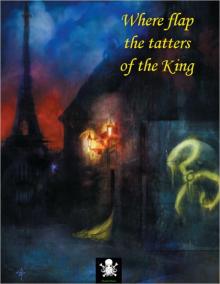 Where flap the tatters of the King
Where flap the tatters of the King The Journey Prize Stories 21
The Journey Prize Stories 21 Tales of the Slayer, Volume II
Tales of the Slayer, Volume II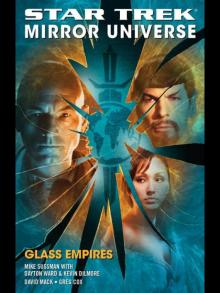 Glass Empires
Glass Empires Golden Age of Science Fiction Vol XII
Golden Age of Science Fiction Vol XII (2/15) The Golden Age of Science Fiction Volume II: An Anthology of 50 Short Stories
(2/15) The Golden Age of Science Fiction Volume II: An Anthology of 50 Short Stories Fairytale Collection
Fairytale Collection Angels!
Angels! Golden Age of Science Fiction Vol XIII
Golden Age of Science Fiction Vol XIII